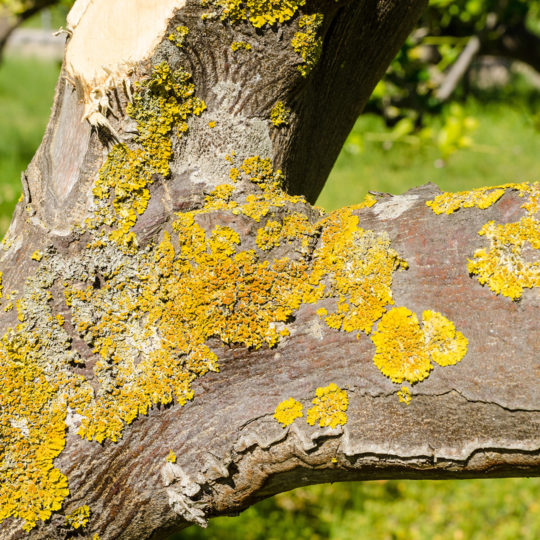Tips for Treating Common Tree Problems
And Determining the Cause
Posted
June 2, 2022

Could you tell if your tree was in trouble? There are the sure signs: leaf spots, bare/broken branches, and insect infestation. But would you know why this is happening and what to do? Here are some common issues and tips for treating common tree problems.
Common Tree Diseases
You may see spots on tree leaves or notice bare branches, but do you know why it’s happening? It could be a sign of tree disease and may spread quickly if not addressed. Some of the most common tree issues spark from fungi. A few examples include:
Cedar/apple rust. This fungal disease affects the leaves, twigs, and fruit on trees. You may notice brown galls on the branches that sprout orange spikes. These spikes create spores that fall on the leaves which triggers the galls to grow on the branches. It’s a cycle that can repeat every year and spread to other trees until addressed, usually with fungicide.
Anthracnose. Affects the leaves and stems of sycamore, dogwood, oak, and maple trees during the wet and cool spring season. A brown or black-colored tissue appears on the leaf surface or along veins. Left untreated, cankers form on stems and weaken branches.
Needle browning. Spruce trees affected by fungal disease will start to drop brown needles.
Apple scab. Leaves on affected apple and crabapple trees will turn yellow and drop. The fruit produced will look tan and sunken. While the tree may look healthy in the spring, by late summer it will appear weak.
Dutch elm disease. This fungus restricts the flow of water and sugars in the tree. Leaves will start to yellow, curl, wilt, and drop. The outer layer of bark will start to discolor.
Preventing is Key
One of the best ways to help prevent fungal disease and any other tree issue is to choose a tree that’s resistant to fungus. If it’s already too late for that, proper care and maintenance are your next best option. Regular watering, fertilizing and pruning help to keep trees healthy and strong.
If your tree is known for a certain disease, or you’ve dealt with one in the past, there are certain fungal treatments you can apply as a preventative measure. Discuss with a licensed tree care professional to determine if your tree is a candidate for such treatments and set up an application schedule.
Treating Common Tree Problems
Once you start to see signs of disease, it’s a little late to prevent them, but there are still things you can do to keep things from getting worse.
- Raking up and destroying infected leaves.
- Removing galls and other growths from bark or branches.
- Pruning dead and dying branches to promote air circulation.
- Consult with a professional tree care company about a fungicide treatment.
Removing a tree if there’s no hope of recovery.
If you think your tree may be stressed or showing signs of disease, contact Elite Tree Care to be sure. After a consultation, we can help determine what the issue is, how it happened, and any treatment options.